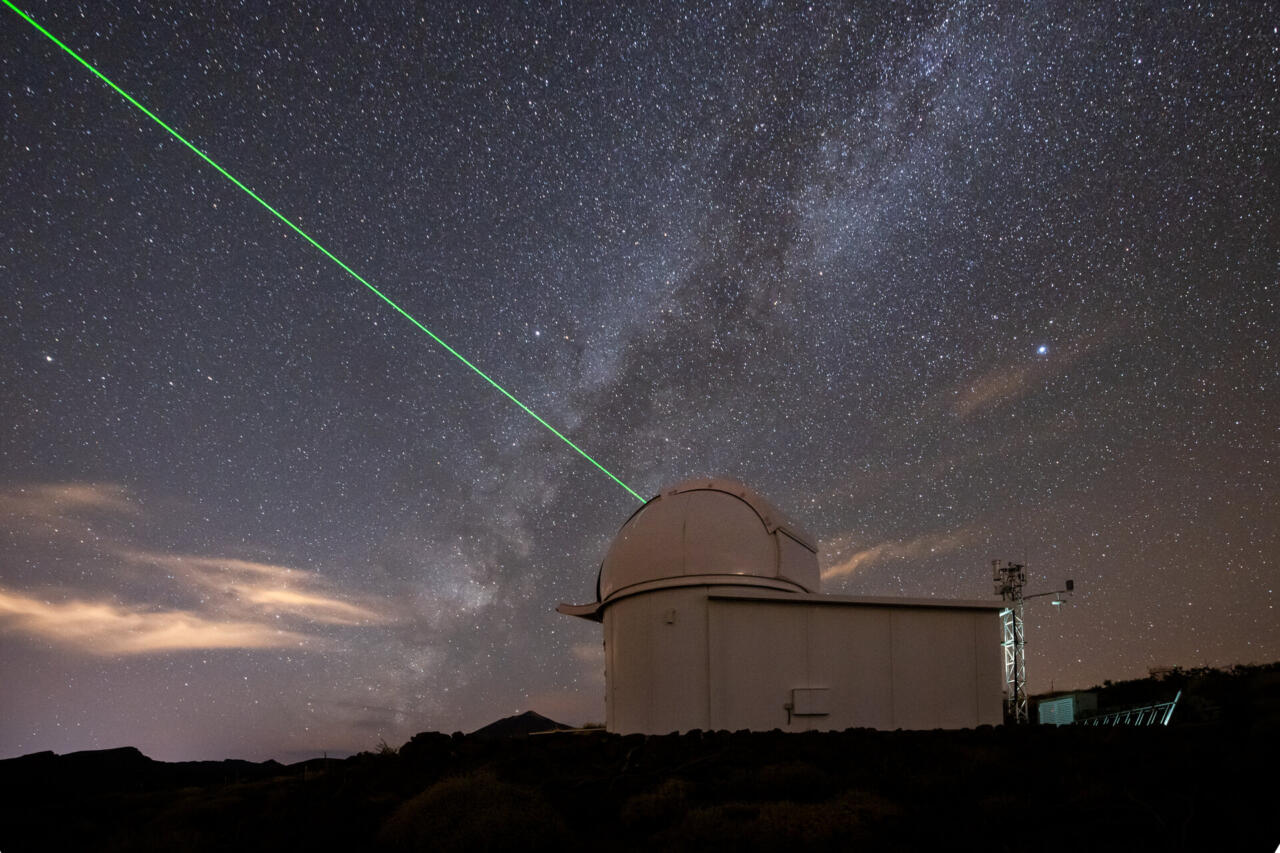
DiGOS GmbH, a German company specialising in optical technologies, has received the European Space Agency’s 21 Rising Stars award for its significant contributions to satellite and space debris laser ranging. The award recognises the company’s development of advanced laser ranging systems, now widely used to improve satellite tracking and reduce the risk of collisions in increasingly crowded orbits.
This recognition forms part of ESA’s Competitiveness Element under the Space Safety Programme, an initiative aimed at positioning European companies as leaders in addressing emerging challenges in space safety. Through targeted initiatives like the Competitiveness Element, ESA supports the growth and development of European space industries. These initiatives not only enable cutting-edge advancements but also strengthen Europe’s position as a leader in space safety and innovation.
The Partnership
The partnership between ESA and DiGOS began in 2018 with the development of the Izaña-1 laser ranging station in Tenerife. This station employs state-of-the-art optical technology to provide precise satellite tracking, enabling operators to avoid collisions. As the number of satellites continues to grow, the ability to monitor orbital traffic with this level of accuracy has become vital.
“ESA contracts have enabled us to expand our horizons”, said André Kloth, General Manager of DiGOS. As a result of ESA’s support, DiGOS now “builds and operates over 6 stations around the world: 2 in Japan, 4 in the EU. More recently, in 2021, we led the construction of a dedicated GNSS satellite laser ranging system operated as part of the Galileo programme which will set new standards in performance, reliability and automation.”
Laser Focus on Space Safety
Laser ranging has shifted from a niche capability into an essential tool for satellite operators, addressing growing concerns over orbital congestion.
The European Space Operations Centre (ESOC) plays a pivotal role in managing space safety. “Due to an ever more congested space environment collision warning messages for satellites are issued at increasing frequency,” explained Tim Flohrer, Head of ESA’s Space Debris Office at ESA ESOC in Germany, “Current radar solutions can monitor the position of a large number of satellites, and also track in case of risky situations, but determining the collision risk benefits substantially from increased accuracy of such data.”
Laser ranging measures the position and velocity of satellites and space debris, which helps “in making decisions whether to manoeuvre satellites to reduce the collision risk”.
Izaña-1 has also made significant contributions to the field of optical communications. This technology offers the advantage of increased bandwidth compared to radio communications, while also ensuring low equipment mass, reduced power consumption and minimal interference.
Flohrer commended the company on its achievements: “DiGOS developed and deployed an industrial product in a short time, from start-up to multiple industrial sales. It has established itself as a reliable supplier of optical ground stations for satellite and space debris laser ranging and has also extended its activities into the field of optical communications”.
Discover more about business opportunities with ESA.
Discover our call for opportunities
Article Courtesy of ESA COMMERCIALISATION GATEWAY











 Copyright 2023 All rights reserved.
Copyright 2023 All rights reserved.